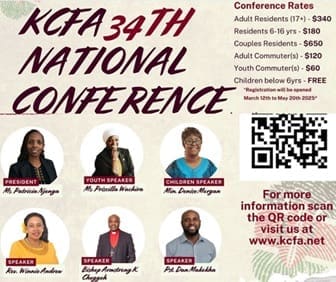
In Nairobi, Kenya, biogas from human waste wins over few cooks
A sanitation initiative that provides clean toilets and cheap fuel is seeing limited success.
Human feces are caked into the mud paths in the slums of Nairobi. One man is trying to turn that human waste into biogas for fuel.
What if someone decided to clean up Nairobi’s slums and dispense with what locals call the “flying toilet,” a plastic bag of feces thrown into the choked, filthy gutters?
And what if that someone worked out a way to use the generated biogas as an inexpensive cooking fuel so that slum dwellers no longer needed to chop down trees for charcoal?
Here in Nairobi, that someone, Josiah Omotto, head of the Umande Trust community organization, is thus far dealing with decidedly mixed results.
Since 2007, the nongovernmental organization has built 52 biogas centers and in June received a $1.46-million grant from the Bill & Melinda Gates Foundation to develop a sustainable biogas toilet that can be developed on a large scale for use throughout Africa.
Biogas systems have already proved successful in rural India, but the nearly 350 plants there are fueled mainly by cow dung rather than human excrement, and the gas is used to generate electrical power instead of cooking fuel.
The problem here is that many residents of the impoverished Kibera neighborhood view the source of the cheap fuel as, well, gross.
“We don’t have many customers for cooking,” said Branice Mmboga, 35, who manages the kitchen at the Umande Trust’s Jasho Ietu Biogas Center. “In a whole week, I may have less than 10 people and most of them are only boiling water or making tea. I can go a day or two or three without cooking for anybody.”
Kennedy Gaya, 31, who runs one of the other Umande biocenters, said residents have been invited to demonstrations of the gas in order to overcome their resistance.
“Some have the perception that the food smells because the gas is generated from human [feces], but after the demonstrations they are convinced otherwise.”
Alun McDonald of the international aid agency Oxfam, which has built three centers in partnership with Umande, agreed about the initial community resistance.
“People were worried about the health implications, the taste, the smell and just the idea of using the gas,” he said. “But after people realized it doesn’t smell or taste of anything, more people used it.”
The need for improved sanitation in the slums of Nairobi and across the developing world is intense; the problem not only insults human dignity, but also leads to the spread of life-threatening diseases.
In the vast Kibera slum, with its twisting dirt alleys and open gutters, hundreds of thousands of people live crammed in an area with no plumbing, piped water or sewage system.
Omotto lived in a middle-class neighborhood until he was 14, when his parents moved to a rural village and his brother, the new breadwinner for the rest of the family, lost his job.
Omotto was forced to move to a mud house in Kibera.
“I would not tell anyone I lived in Kibera,” he said, recalling the stigma. The poor sanitation was “something we kept in our own subconscious.”
Omotto said the neighborhood’s sanitation problem intensified two decades ago when the government forced slumlords to slash rents. In response, they stopped building or cleaning latrines.
“Tenants were left to their own designs,” he said, “so the situation got a lot worse. At that time I worked for an international [humanitarian] organization and they did a lot of studies, studies and studies. It served to highlight the sanitation disaster. It’s a tsunami. But nothing was done.”
Omotto co-founded the Umande Trust in 2004. After a trip to India to study biogas latrines, Umande officials built their first biogas center in 2007.
The centers are among several similar pioneer projects around the world. India has several in urban slums that use human waste for cooking gas. In China, the International Fund for Agricultural Development, a U.N. agency, is supporting biogas projects using animal waste to create cooking fuel. Projects in China and elsewhere in Asia use a combination of human and animal waste to generate energy. In Western Europe and the U.S., biogas plants generate power.
The Umande Trust’s centers each contain about eight latrines, servicing about 800 residents, who pay a small fee for their use. The centers also include rooms used for libraries, community meetings, hotels and cafes.
“There’s all this talk about upgrading slums in Africa,” Omotto said. “We see biocenters as models to improve the environment.”
The toilets have proved safe and popular, but the gas often goes unused. Although the visceral response is a major reason, technical problems don’t help. Gas pressure remains uneven, and the gas sometimes runs out before a meal can be cooked, undermining confidence in its value as an alternative to charcoal. Because the poor pressure precludes piping the product into houses, customers also face the inconvenience of carrying pots to a communal biogas kitchen to cook.
Gaya, the Umande caretaker, hopes that with time, the technical glitches can be overcome. Meanwhile, he said, organizers are trying to convince the community that the gas is clean.
“We try to clear that perception by telling them that this gas is naturally purified in its making process,” he said. “It’s just like fuel gas. When we cook food with that, the food doesn’t smell of fuel or have a dangerous effect.”
Source:care2.com







